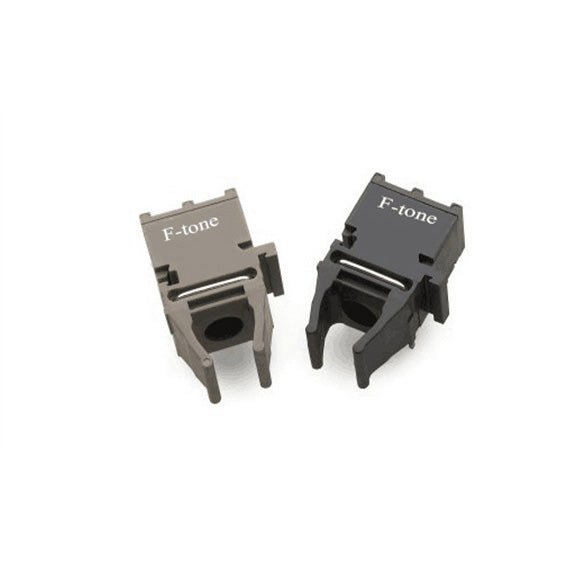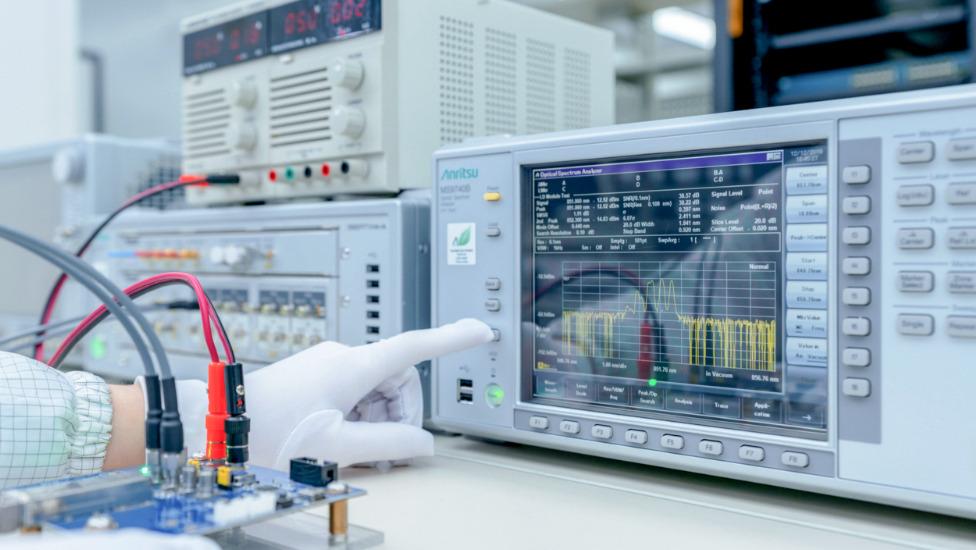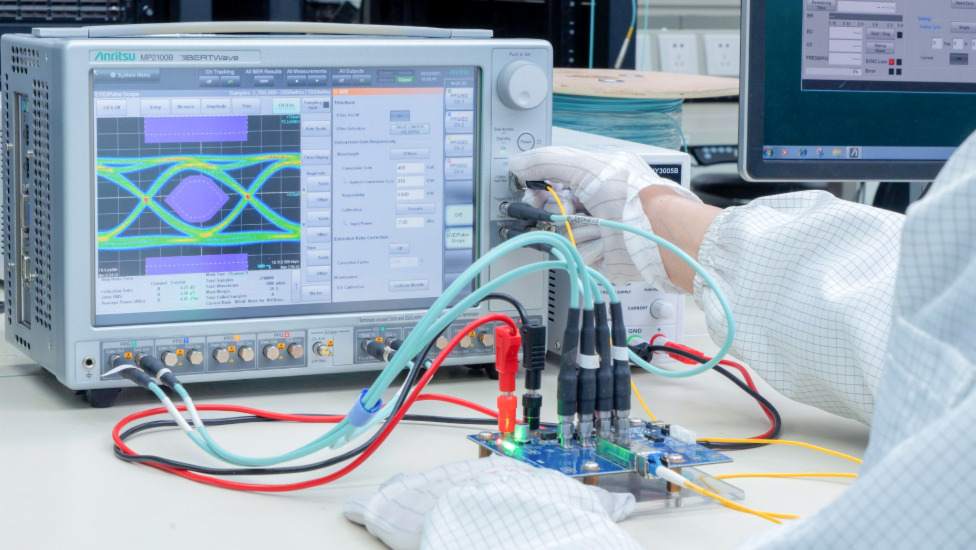AVAGO HFBR-2521Z Compatible 650nm optical fiber The DC-5 MBd high-performance optoelectronic transceiver device
AVAGO HFBR-2521Z Compatible 650nm optical fiber The DC-5 MBd high-performance optoelectronic transceiver device
AVAGO HFBR-2521Z Compatible 650nm optical fiber The DC-5 MBd high-performance optoelectronic transceiver device
product presentation
FT-1521Z / 2521Z series optical fiber transceiver devices, combined with 650nm plastic optical fiber, provide high performance and low cost optical fiber communication links for industrial, power generation, medical, transportation and game applications. FT-1521Z is driven by 60mA current with a minimum typical transmission distance of 80 meters.
FT-1521Z / 2521Z is fully compatible with AVAGO’s HFBR-1521Z / 2521Z series products, supporting industrial standard plastic fiber interface, providing horizontal structure. FT-1521Z / 2521Z fits 1mm diameter plastic fibers and HCS fibers of 200 μ m diameter.
FT-1521Z is a transmitter and is packaged by a high-power LED chip with a peak wavelength of 650nm. The plastic fiber with 1mm core diameter can output a typical optical power value of-5 dBm under a 60mA current drive. FT-2521Z is a receiver composed of a high gain span resistance amplifier with integrated photodiode. The output stage is open leakage output and supports a maximum output voltage of 18V. To improve the stability of the output pulse width of the receiver, the receiver chip has designed the automatic artery width calibration circuit with the pulse width distortion within ± 20ns.
Product characteristics
● Data transfer rate: DC-5 MBd
● Typical transmission distance: 80 meters
● The output waveform and pulse width is stable
● Meet the industrial grade temperature range: -40℃ to 85℃
● Compliance with the RoHS criteria
Product application
● Factory automation
● Lan
● Audio and video applications / game applications
● Industrial network and fieldbus
System connection index
Transceiver link photoelectric parameters
|
Parameter |
Symbol |
Min |
Typical |
Max |
unit |
Explain |
|
signal rate |
Sr |
DC |
5 |
MBd |
||
|
transmission distance |
L |
43 |
80 |
m |
IF=60mA |
|
|
Output from low to high time delay |
TPLH |
47 |
ns |
Fiber length is 0.1m, PR=-10dBm |
||
|
Output from high to low |
TPHL |
42 |
ns |
Fiber length is 0.1m, PR=-10dBm |
||
|
Pulse width distortion |
TP |
-5 |
ns |
Fiber length is 0.1m, PR=-10dBm |
||
|
-7 |
ns |
PR= -24dBm |

Figure 1. Transmission distance limit of POF fiber FT-1521Z / 2521Z with 1mm core diameter 
Figure 2 The pulse width distortion of FT-1521Z / 2521Z at the 5 MBd rate
Typical application diagram 
Circuit diagram of the typical application of FT-1521Z / 2521Z
By adjusting the R1 resistance value, it can compromise between the power consumption and the transmission distance, as given below
If the maximum transmission distance is 65 meters, from FIG. 1, the driving current of FT-1521Z should be 30mA, and from FIG. 4, when the driving current of FT-1521Z is 30mA, the positive current voltage is 1.95V, then 
The transmission distance given in Figure 1 does not consider additional system loss. If there is additional system loss, the transmission distance limit needs to be calculated by shifting additional system loss value (in dB) from the left coordinate of Figure 1, for example as below
When the driving current of FT-1521Z is 30mA, it can be obtained from Figure 1 that the transmission distance can be guaranteed to be 33 meters under full temperature. If there is an additional 2dB of system loss, the transmission distance can still be guaranteed to be 23 meters at full temperature.
Transmitter index
Transmitter pin definition
|
Pin |
Name |
Definition |
|
1 |
Anode |
LED positive pole |
|
2 |
Cathode |
LED negative pole |
|
3 |
NC |
NC |
|
4 |
NC |
NC |

Absolute maximum rating
|
Parameter |
Symbol |
Min |
Max |
unit |
Explain |
|
Storage temperature |
Ts |
-40 |
+85 |
℃ |
|
|
Working temperature |
Ta |
-40 |
+85 |
℃ |
|
|
Forward DC current |
IF |
100 |
mA |
||
|
Backward voltage |
VR |
10 |
V |
T=25℃ |
|
|
Circulating lead welding temperature |
260/10 |
℃/s |
Photoelectric performance parameters (operating temperature range-40℃ -85℃, power supply voltage range 4.75V <Vcc <5.25V)
|
parameter |
symbol |
Min |
Typical |
Max |
unit |
explain |
|
1mmPOF optical fiber output |
PT |
-8 |
-5 |
-3 |
dBm |
IF=60mA,T=25℃ |
|
-10 |
-2 |
IF=60mA |
||||
|
Output optical power temperature coefficient |
PT/T |
-0.45 |
%/℃ |
|||
|
Peak radiation wavelength |
PK |
640 |
650 |
660 |
nm |
|
|
Direct voltage |
VF |
1.85 |
2.0 |
2.4 |
V |
IF=60mA |
|
Numerical aperture |
NA |
0.5 |
||||
|
Rise time |
Tr |
15 |
17 |
ns |
IF=60mA |
|
|
Drop-out time |
Tf |
15 |
17 |
ns |
IF=60mA |

Figure 4 Positive voltage and current curve

Figure 5 Positive current and normalized output optical power curve
Figure 5 shows the positive guide current of FT-1521Z. The corresponding output optical power when the normalized reference is 60mA drive current, the left coordinate is the fold change, and the right coordinate is the dB change.
The output optical power corresponding to other driving currents can be calculated by FIG. 5, for example below
As a typical value, the output optical power of FT-1521Z at 60mA driving current at room temperature is-5 dBm. If the driving current of FT-1521Z drops to 30mA, the output optical power is 0.5 times of the optical power at the driving current of 60mA. If the output power can be seen from the right coordinate, the output optical power changes by-3 dBm compared with the driving current of 60mA, which is-8 dBm.
Receiver metrics
Receiver pin definition
|
Pin |
Name |
Definition |
|
1 |
Vo |
outlet end |
|
2 |
GND |
Chip to |
|
3 |
VCC |
Chip power supply |
|
4 |
RL |
head end |

Absolute maximum rating value
|
Parameter |
Symbol |
Min |
Typical |
Max |
unit |
|
Storage temperature |
Ts |
-40 |
+85 |
℃ |
|
|
Working temperature |
Ta |
-40 |
+85 |
℃ |
|
|
Circulating lead welding temperature |
260/10 |
℃/s |
|||
|
Supply voltage |
VCC |
-0.5 |
7 |
V |
|
|
Ts |
-40 |
+85 |
℃ |
Photoelectric performance parameters (operating temperature range-40℃ -85℃, power supply voltage range 4.75V <Vcc <5.25V)
|
Parameter |
Symbol |
Min |
Typical |
Max |
unit |
Explain |
|
Peak wavelength |
λ |
650 |
nm |
|||
|
Input power at an output of 0 |
PRL |
-24 |
-1 |
dBm |
T=25℃ |
|
|
-23 |
-2 |
|||||
|
Input power at the output of 1 |
PRH |
-40 |
dBm |
VO=5V |
||
|
Output voltage at low output |
VOL |
0.2 |
0.4 |
V |
PR=PRLmin |
|
|
Leak current at high output |
IOH |
100 |
μA |
PR=0 |
||
|
Source current |
ICCH |
5.2 |
10 |
mA |
VCC=5V,PR=0 |
|
|
Source current |
ICCL |
5.3 |
10 |
mA |
VCC=5V,PR=-24dBm |
|
|
Internal pull-up resistance |
RL |
800 |
1000 |
1200 |
Ω |
Overall dimensions drawing (FT-1521Z / 2521Z)
 List of product models
List of product models
|
Product model |
Description |
|
FT-1521Z |
Transmitter |
|
FT-2521Z |
Receive devices |
Important Notice
Performance figures, data and any illustrative material provided in this data sheet are typical and must be specifically confirmed in writing by F-tone Networks before they become applicable to any particular order or contract. In accordance with the F-tone Networks policy of continuous improvement specifications may change without notice.
The publication of information in this data sheet does not imply freedom from patent or other protective rights of F-tone Networks or others. Further details are available from any F-tone Networks sales representative.
Share

About F-tone Networks
F-tone Networks is now a world leader in development of optical transceivers and provide a wide range of high-speed optical solutions for optical communication networking, especially for AI, Data Center, enterprise data networking, Industry, aerospace, mining, shipbuilding, railway, metro, long haul transport networking, and mobile access networking applications
F-tone Networks invested in foundational photonics technologies and extensive product development and engineering with global presence in many area also.

Power and Wavelength Testing
Test the signal delivering strength and wavelength, to ensure the signal decoding capacity of the receiver, and the wavelength remains consistent from the transmitter to the receiver.

Traffic Testing
Test the bit error rate and packet loss rate, to make them meet the corresponding standards and ensure the performance of transceivers.

Optical Performance Testing
Test the transceivers' eye diagram situation, receiving sensitivity, extinction ratio, wavelength, light-emitting, light-receiving, current and voltage, to ensure the signal quality, stability and reliability of the transmission.

End Face Testing
Check the end face of the transceivers and keep them clean for more stable data transmission, better performance, and durability.

Various Switch Tests
Every module is quality tested for compatibility in the multi-brand switches environment, guaranteeing flawless operations.
Featured collection
-
AVAGO HFBR-2521ETZ Compatible Domestic Alternative Optical Module
Regular price $0.00Regular price -
AVAGO HFBR-1521ETZ Compatible Domestic Alternative Optical Module
Regular price $0.00Regular price -
AVAGO HFBR-1528Z Compatible Domestic Alternative Optical Module
Regular price $0.00Regular price -
AVAGO HFBR-2528Z Compatible Domestic Alternative Optical Module
Regular price $0.00Regular price



